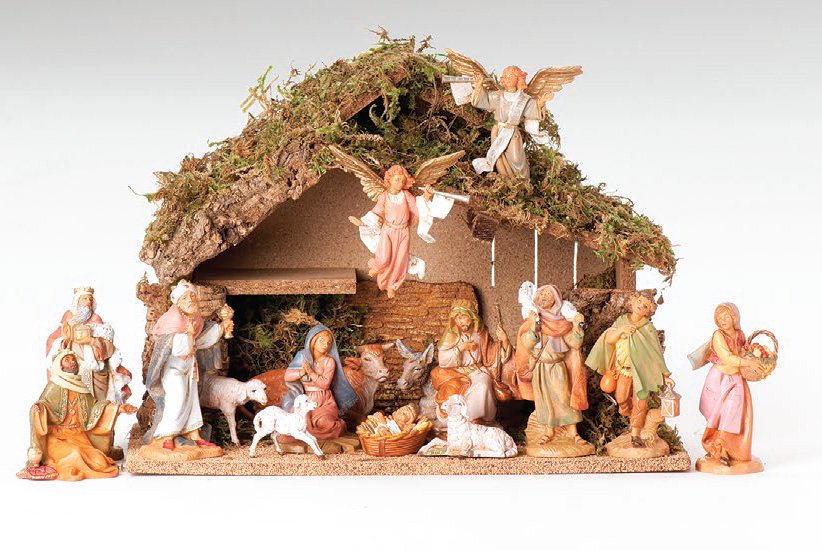
On Christmas Eve, 800 years ago, St. Francis of Assisi organized the first live Nativity scene in Greccio, a town located 55 miles south of Assisi in Italy. At St. Elizabeth’s, we have a beautiful stained glass window commemorating this momentous event in the life of St. Francis and the whole Church.
Last Wednesday, in his weekly Catechesis, Pope Francis talked about the Greccio Nativity as a school of simplicity and joy. The Holy Father says that “the Nativity scene was created to bring us back to what matters: to God who comes to dwell among us,” to be our Emmanuel (Cf. Mt 1:23). This is the heart of Christmas.
Our Pope invites us to be amazed at the Nativity scene and contemplate its mystery. As he put it, St. Francis of Assisi wanted to “arouse amazement through the Nativity scene, at the extreme humility of the Lord, at the hardships he suffered in the poor grotto of Bethlehem for love of us.”
If we don’t approach Christmas Eve with amazement, we will stay at a basic level; our faith will be shallow. An attitude of awe is essential so that Christmas does not become for us just the remembrance of a historical fact or a beautiful tradition of our grandparents.
Pope Francis said the Nativity scene is a “school of simplicity.” When contemplating the scene of the birth of our Lord, evangelical simplicity shines, poverty is praised, and humility is related. This simplicity collides with the modern Christmas mentality, where consumerism corrodes its meaning.
Let us take a break from the shopping frenzy and contemplate Jesus’s birth. During Christmas day, let us dedicate some time to prayer, even for only 15 minutes, and just look at Jesus, Mary, and Joseph, the animals, the poor cave, the shepherds, and the angels.
It’s so easy to get busy and absorbed by the gifts, the celebrations, and everything else. The message of simplicity invites us to consider the “one thing necessary,” which is God’s love in this beautiful mystery.
According to our Pope, the Nativity scene is also a “school of joy.” Joy is a fruit of contemplating the Nativity scene because in that place, “one tangibly touches the nearness of Jesus, the tenderness of God, who does not leave us alone, but consoles us.”
This joy is different from having fun. Having fun can be an expression of joy, but often, we have fun without joy, making noise, but without deep meaning. Let’s make sure this Christmas we celebrate not just the fact that we are together, or that we are on a break, or that we have good food. These things are good, but our Christmas would be very shallow if we forget why we are celebrating.
Joy is the fruit of experiencing God’s closeness, tenderness, and compassion at Christmas. If we look with attention to the Nativity scene, we will find these three attitudes of God towards us. This experience will help us to live our everyday lives with authentic joy.
Pope Francis reminded us that “the Nativity scene is like a small well from which to draw the nearness of God, the source of hope and joy. The Nativity scene is like a living Gospel, a domestic Gospel.”
Tonight, tomorrow, and throughout the whole Christmas octave, let us spend time in contemplation of the Nativity scene, in amazement of God’s love, tenderness, and closeness. Let us sit with the Lord in his blessed birth and allow our hearts to feel his tenderness.

